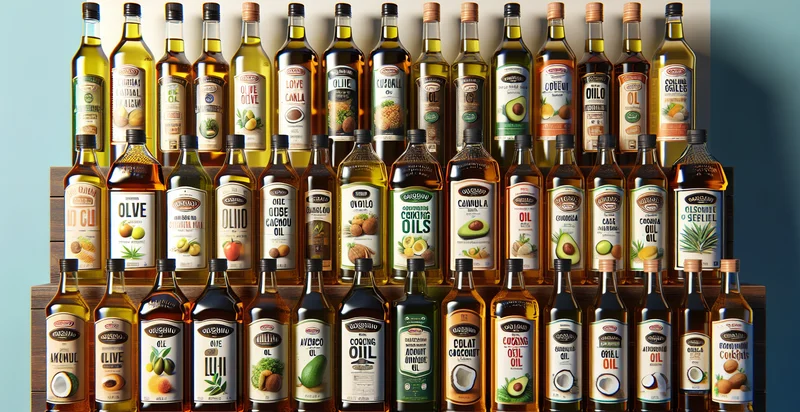Identify cooking oil type
using AI
Below is a free classifier to identify cooking oil type. Just upload your image, and our AI will predict what type of cooking oil it is - in just seconds.

Contact us for API access
Or, use Nyckel to build highly-accurate custom classifiers in just minutes. No PhD required.
Get started
import nyckel
credentials = nyckel.Credentials("YOUR_CLIENT_ID", "YOUR_CLIENT_SECRET")
nyckel.invoke("cooking-oil-type", "your_image_url", credentials)
fetch('https://www.nyckel.com/v1/functions/cooking-oil-type/invoke', {
method: 'POST',
headers: {
'Authorization': 'Bearer ' + 'YOUR_BEARER_TOKEN',
'Content-Type': 'application/json',
},
body: JSON.stringify(
{"data": "your_image_url"}
)
})
.then(response => response.json())
.then(data => console.log(data));
curl -X POST \
-H "Content-Type: application/json" \
-H "Authorization: Bearer YOUR_BEARER_TOKEN" \
-d '{"data": "your_image_url"}' \
https://www.nyckel.com/v1/functions/cooking-oil-type/invoke
How this classifier works
To start, upload your image. Our AI tool will then predict what type of cooking oil it is.
This pretrained image model uses a Nyckel-created dataset and has 20 labels, including Almond Oil, Avocado Oil, Canola Oil, Coconut Oil, Corn Oil, Flaxseed Oil, Grapeseed Oil, Hemp Oil, Macadamia Oil and Mustard Oil.
We'll also show a confidence score (the higher the number, the more confident the AI model is around what type of cooking oil it is).
Whether you're just curious or building cooking oil type detection into your application, we hope our classifier proves helpful.
Related Classifiers
Need to identify cooking oil type at scale?
Get API or Zapier access to this classifier for free. It's perfect for:
- Quality Control in Food Production: Food manufacturers can implement the cooking oil type identifier to ensure that the correct type of oil is being used in their products. This helps maintain quality standards and prevent contamination, which can lead to recalls or health issues.
- Restaurant Inventory Management: Restaurants can utilize this function to automate the identification and inventory management of different cooking oils. By accurately tracking oil types, they can optimize their supply chain and reduce waste from using incorrect or mixed oils.
- Consumer Health Monitoring: Health-conscious consumers can use a mobile app with the cooking oil type identifier to scan oil containers when shopping. This provides information about the oil's nutritional profile, helping them make informed choices based on dietary preferences or restrictions.
- Culinary Training and Education: Cooking schools can integrate this technology into their training programs to teach students about different types of cooking oils and their specific uses. Identifying oil types accurately will enrich lessons about flavor profiles, health benefits, and cooking techniques.
- Food Safety Compliance: Food safety inspectors can leverage the cooking oil type identifier in their evaluations of restaurants and food production facilities. This ensures that establishments are using oils in compliance with safety regulations and dietary guidelines, thereby protecting consumer health.
- Personalized Recipe Recommendations: A recipe application can integrate the identifier to suggest recipes based on the type of cooking oil users have at home. This personalization enhances user experience by providing tailored cooking advice and maximizing the use of available ingredients.
- Marketing and Branding for Oil Producers: Cooking oil brands can use this technology for targeted marketing campaigns, allowing consumers to identify their oils more easily. This can enhance brand recognition and loyalty while also educating consumers about the unique qualities of different oil types.


